Landsknechts: soldiers in individual uniforms
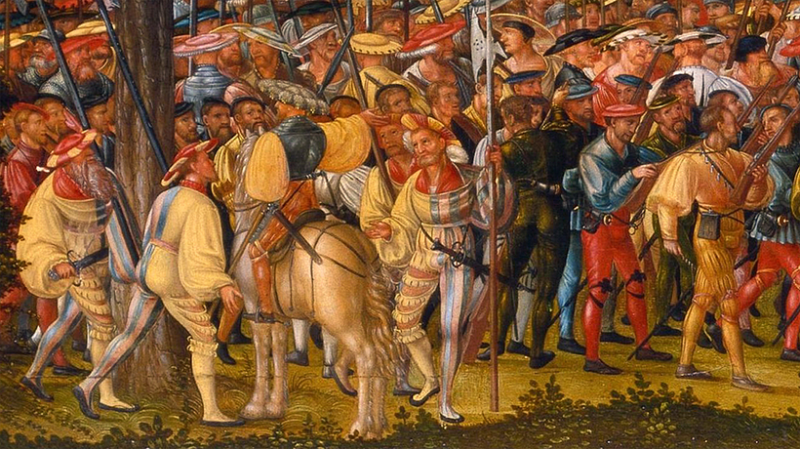
Fragment of the painting "An anachronistic siege of the Battle of Alesia" depicting figures of landsknechts with halberds. Melchior Feselen (1495–1538), 1533 Alte Pinakothek Munich
one girl, two girls for each warrior,
the multicolored clothes of Sisera received as booty,
multi-colored clothes obtained as booty,
embroidered on both sides, taken from the shoulders of the prisoner.
Book of Judges of Israel, 5:30
History uniforms. We have already talked more than once or twice on the pages of VO about certain types of uniforms, as well as about when the first samples of it began to appear. In relation to the Middle Ages, it was most likely the time of the Hundred Years War. Then, for the first time, large detachments of infantry from commoners appeared on the battlefield. These detachments were recruited by representatives of the nobility, or they were in the service of the king, so it is not surprising that these detachments received uniform-looking clothes that were specially tailored so that people dressed in them could be easily recognized on the battlefield.
The English archers wore white jackets with a red cross in front and behind, but the French foot soldiers wore red jackets with a white cross. The foot soldiers of the Teutonic Order also used similar clothes, wearing white jackets with a black order cross or ... an “unfinished” cross in the form of the letter “T”, depending on their rank.
Many feudal lords also made attempts to dress their soldiers in caftans of the same color. So it would hardly be a mistake to say that it was the wars of the XNUMXth century that paved the way in Europe to a single soldier's uniform.
In the era of the New Age, which began in 1500, it became even easier to identify your own soldiers and the enemy. For example, the famous "black horsemen" - German reiters and pistols, although they often wore armor made for them individually, flaunted in black "armor". Moreover, the “poor” armored men wore armor painted with black paint, and the wealthy also wore black armor, but only initially blued.
Well, who exactly belonged to the “black horsemen” was easily determined by the scarves tied over their shoulders: the Germans at arms had red ones, and the French had white ones. It was hard to make a mistake here, even considering them from afar.
The famous Swiss, even on the battlefield, wore mostly civilian clothes. But at the same time, they differed from all others by a white straight cross sewn on it. I must say that such a cross was sewn not only on outerwear or sleeves, but often even on highways. Or rather, on one of the highways - the one on the left, which is shown by the drawings of that time.
However, it was at the beginning of the XNUMXth century that infantry appeared on the battlefields in Europe, the whole appearance of which was nothing more than a characteristic uniform, and at the same time, none of the costumes of these infantrymen resembled the other, that is, it was strictly individual !
Probably, everyone has already guessed, but it was clear from the name that we will talk about landsknechts - the hired infantry of Emperor Maximilian I, which he started somewhere between 1482 and 1486. against the Swiss infantry. We will not talk about what they were like, what was their organization, salary, and so on, because there is a large and rather detailed article about landsknechts on the Internet.
In this material, it will be told just about what in that material either there was no place at all, or very little was written. In addition, the Wikipedia material in question is, for some reason, very poorly designed in illustrative terms. Although, it would seem, precisely because of the brightness and colorfulness of the clothes of the landsknechts, it should have been accompanied by color illustrations.
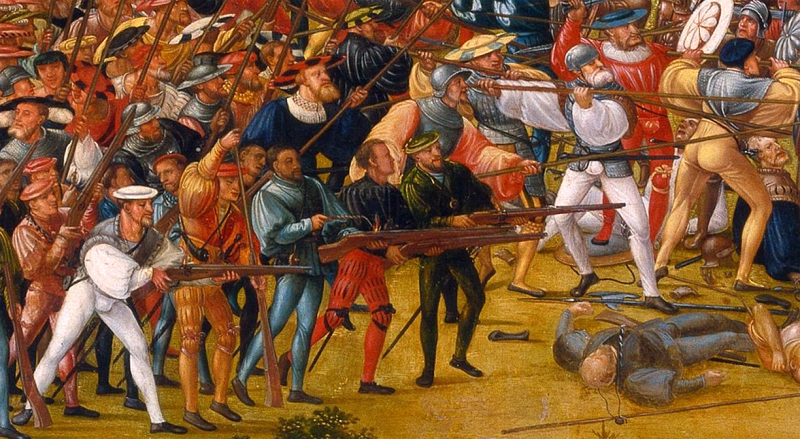
Fragment of the painting "Anachronous siege of the battle of Alesia" depicting figures of landsknechts with arquebuses. Melchior Feselen (1495–1538), 1533 Alte Pinakothek Munich
First of all, a few words about their weapons. The Landsknechts, like the Swiss, were armed with lances, but somewhat shorter than the Swiss, 3–4 meters long. At the same time, they held them by the back end to increase the "working length", while the Swiss usually took the pike in the middle and kept it at chest level. Naturally, they acted in this way in a battle with infantry. Moreover, the landsknechts kept the peak low. Their second weapons there was a halberd, which was armed with entire divisions of halberdiers and commanders, in particular, "foremen".
Unlike the Swiss, who did not like firearms, traditionally paying tribute to the crossbow, the landsknechts used it quite widely. Moreover, relatively light and short arquebuses with wick locks were used. Infantrymen with two-handed swords were paid double salaries, as they fought in the front ranks. It is unlikely that they could, as many believe, cut off the tips of the enemy’s peaks, since the Swiss had langets - metal strips running along the shaft. But it was quite possible to push a number of enemy peaks in order to infiltrate his system with a two-handed sword.
But the main thing that was characteristic of Landsknechts was their appearance. And above all - the exceptional brightness and pretentiousness of their outfits, conspicuous from afar. And in terms of identification, they were nothing more than a real uniform, although it would hardly be possible to find at least two soldiers dressed in the same outfit among the landsknechts.
The impression their outfits made is evidenced by the fact that the King of England Henry VIII himself ordered to sew suits in the style of landsknecht clothes and ... did not hesitate to walk around in them.
Moreover, the decoration of clothes in the style of "puffs and cuts", namely, puffs and cuts, the robes of landsknechts differed from all others, became fashionable and became popular not only among men, but also among women. Moreover, it was a very radical solution to the issue of embellishment of the then outerwear. After all, if earlier it was solid, now, thanks to the presence of many cuts on it, the lower one became visible under the outer clothing, and it also had to look exceptionally luxurious.
But, as already noted here, although there are a lot of images of landsknechts, and the most famous artists of the Renaissance, they are mainly black and white engravings in which color was initially absent, and in fact it played a very important role in the clothes of landsknechts.
And here we are all, one might say, lucky. In addition to engraved etchings, color engravings by four Nuremberg artists close to Albrecht Dürer have come down to us. These are Sibald Hans Beham (1500–1550), Erhard Schön (1491–1542), Niklas Stoer (circa 1500–circa 1562) and Peter Flötner (1485–1546). Each of them made a number of engravings, which were collected and printed in 1530 by two publishers Hans Guldenmund and Niklas Meldemann in Nuremberg.
Colored prints were very popular at the time, so it's no surprise that these two gentlemen collected the best of them, signed them with the HG and NM monograms, and published them in the form of an album of 20 prints, all hand-coloured! By the way, on all the engravings, poems by a certain Hans Sachs were placed. The publication ended up in the Boijmans and van Beuningen Museum in Rotterdam, the Netherlands.
The series was called "Landsknechts" and differs from others like it, first of all, in that its engravings usually depict one, rarely two characters. On them we see landsknecht pikemen, halberdiers, swordsmen, arquebusiers and even a gunner. Officers are depicted, up to a judge-lawyer and even a military police officer. There are landsknecht policemen, servant boys and ... women who accompanied the detachments of landsknechts on a campaign.
Explanatory texts tell the rank of the depicted characters, their position and the type of weapon they wield. Sometimes even the name of the depicted landsknecht was indicated and who he was before he entered the service, or where he fought. For example, about one of the landsknechts, it is reported that he is a nobleman, that is, a man is not simple, and yet he fights shoulder to shoulder with commoners.
It is interesting that the signatures also emphasize the fact that the command posts among the landsknechts were by no means always occupied by people from the aristocracy. In other words, commanders were promoted on merit, and not on their origin.
So, today we will get acquainted with the engravings from this wonderful album by Hans Guldenmund and Niklas Meldemann.
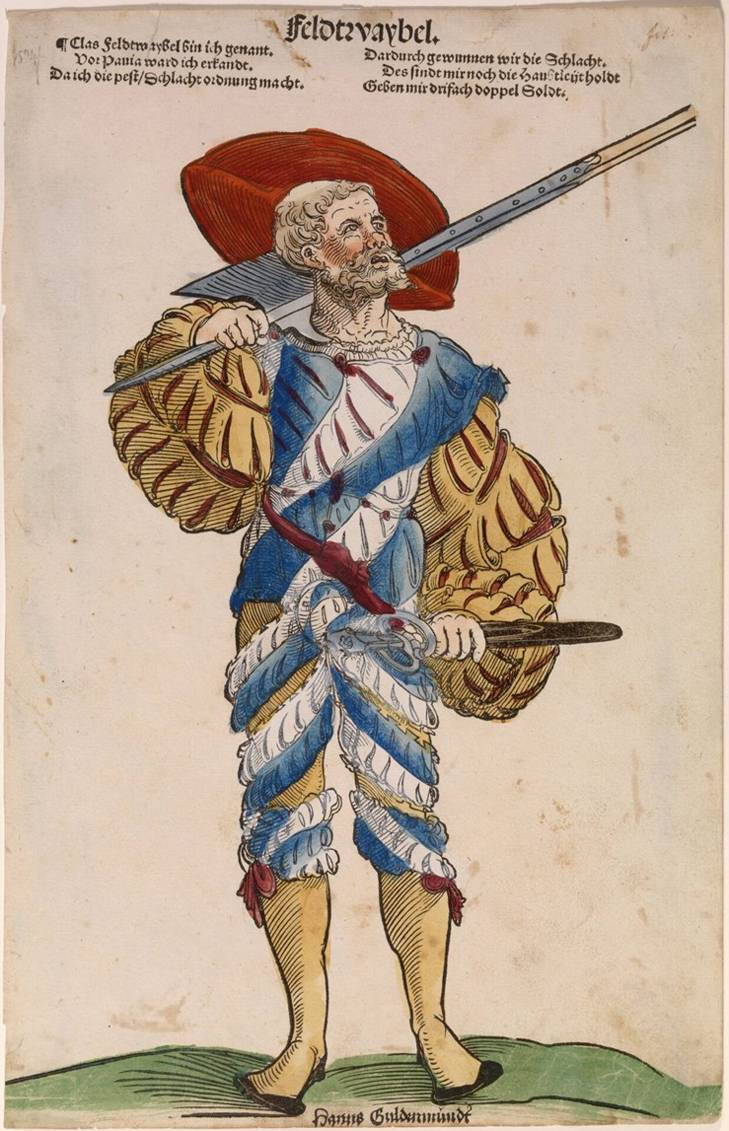
Sergeant Claes with a halberd, who is known to have taken part in the Battle of Pavia (1525). Illustrator: Erhard Schön
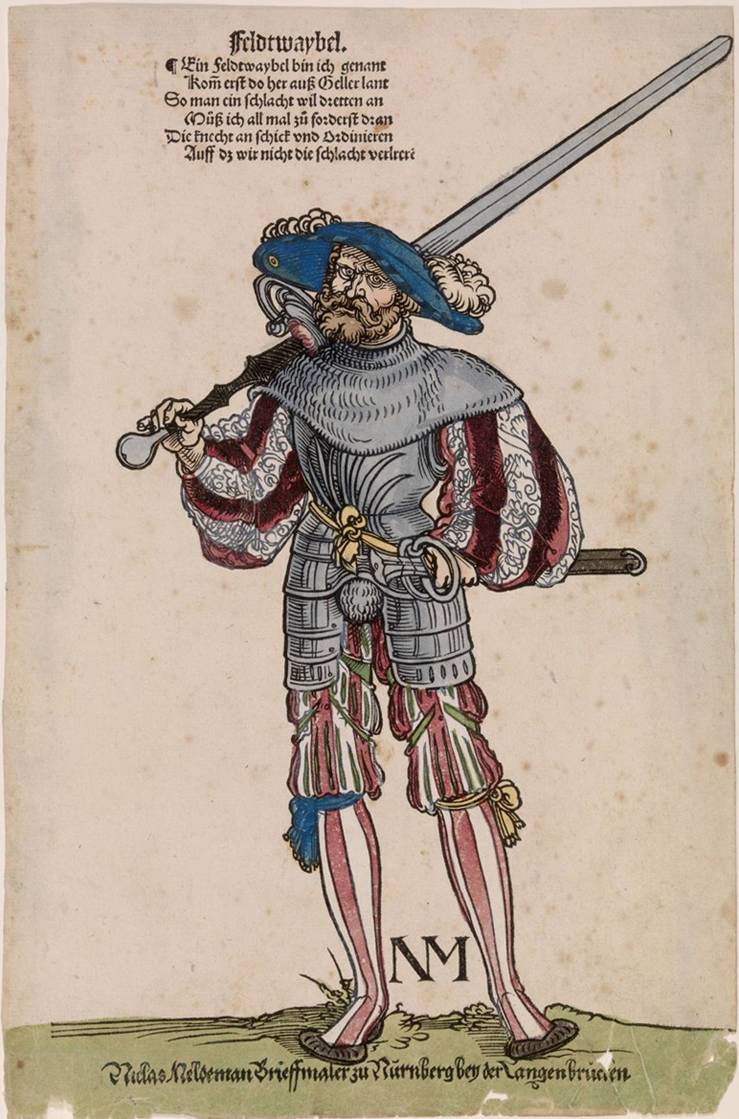
Landsknecht sergeant major in armor and with a two-handed sword. Artist Sibald Beham. Series: Landsknechts. Text: Hans Sachs. Publisher: Hans Guldenmund. Edition: Nuremberg, 1530. Boijmans and Beuningen Museum, Rotterdam, The Netherlands
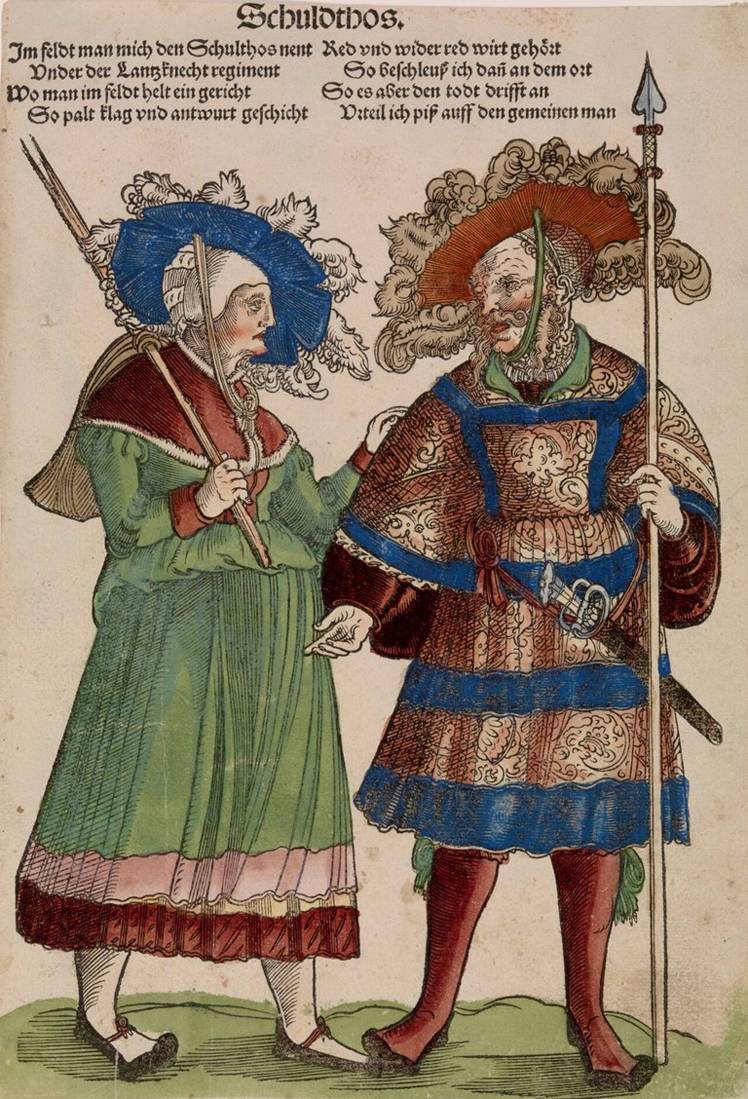
The judge-lawyer is engaged in demanding money from the woman who accompanied the landsknechts. Most likely, this is a merchant who must pay for the right to trade. Artist: Niklas Stoer
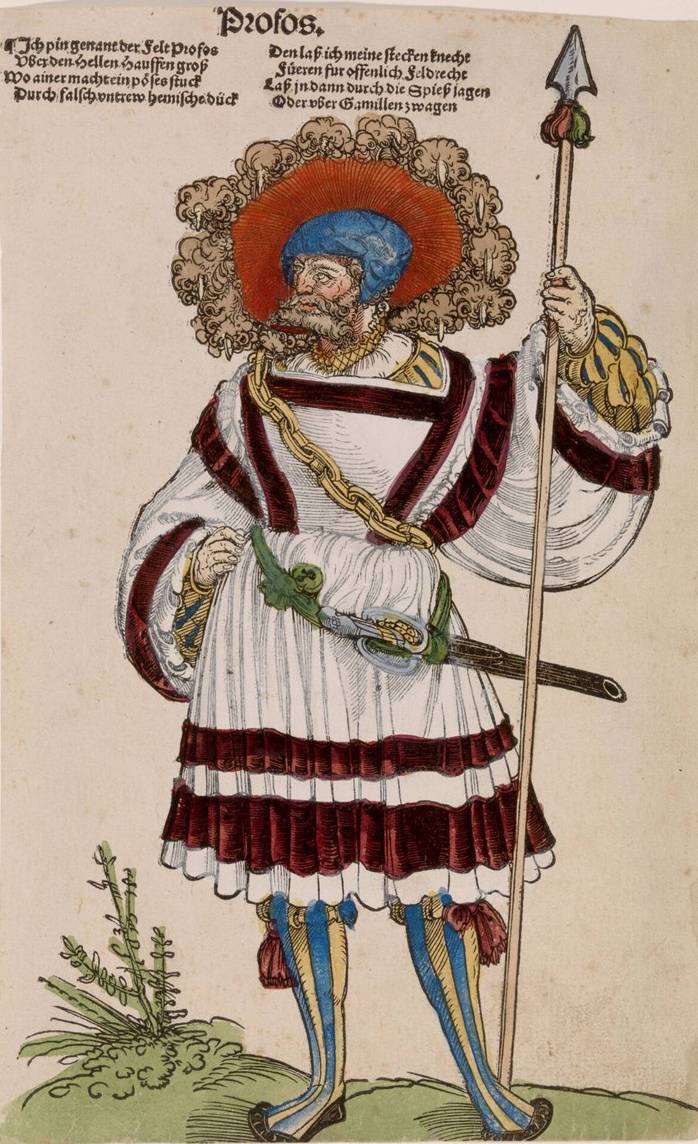
Provost (German profos) is a military police officer. Artist: Erhard Schön. Noteworthy is his outfit with a "skirt". Again, Henry VIII liked this “skirt”, and he began to wear it even with knightly armor! And - pay attention, almost every Landsknecht, regardless of rank and position, has a Katzbalger sword on his belt (German katzbalger "koshkoder"), and he is also a Landsknetta - a short sword used in close combat with a wide blade and a complex guard in the form eights
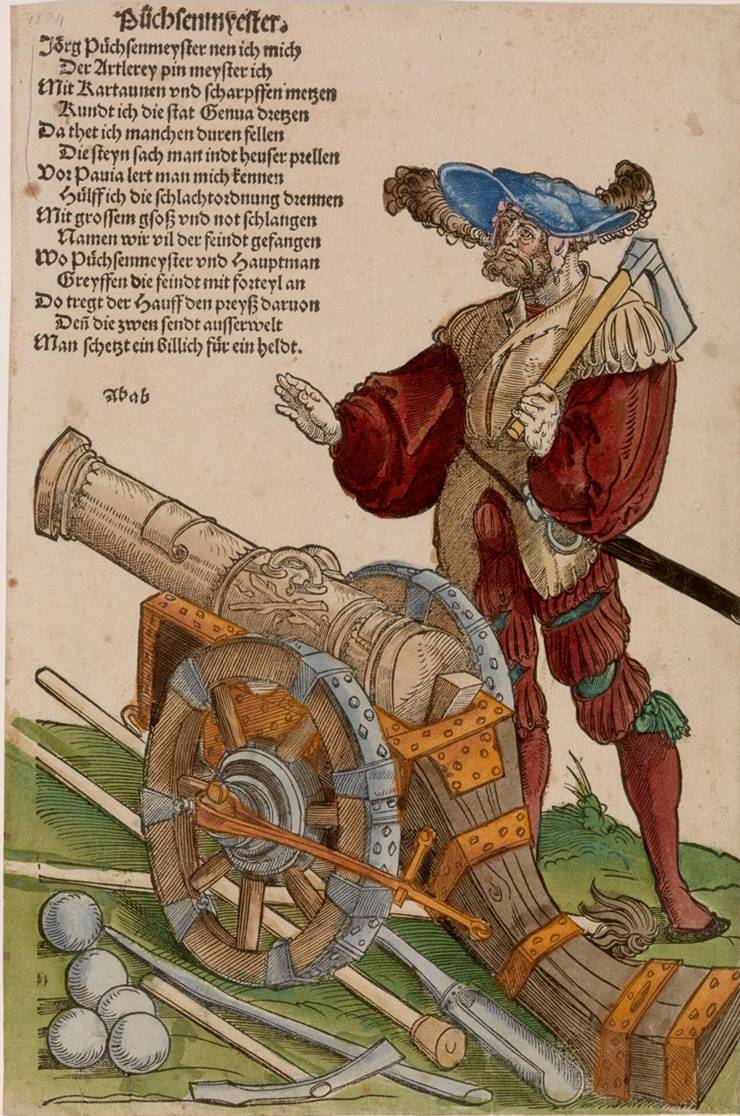
Landsknecht artilleryman named Jörg. Illustrator: Erhard Schön
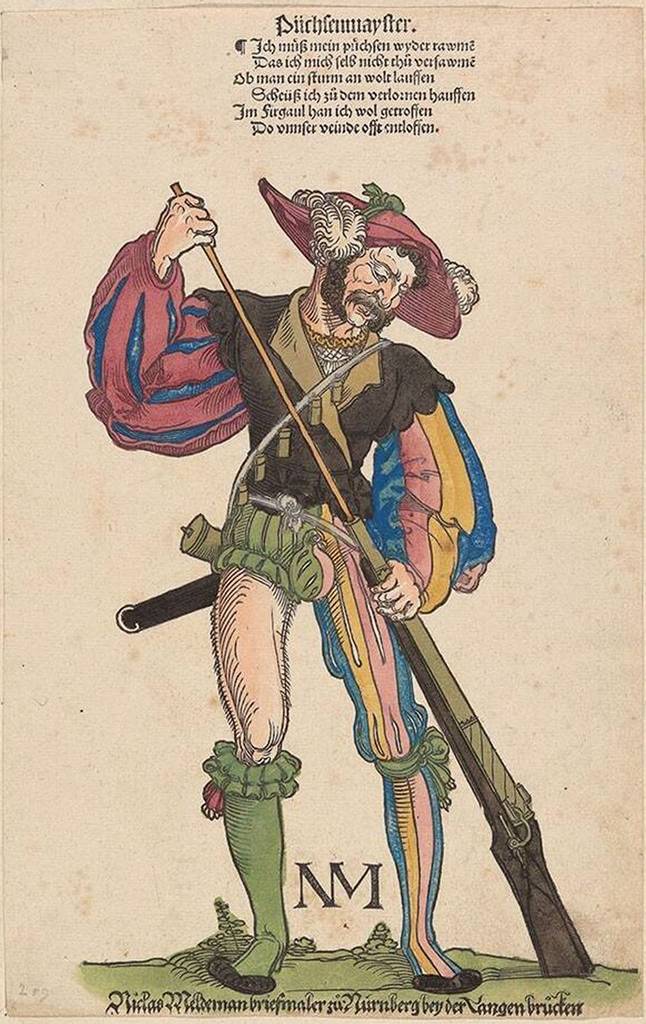
Buxenmeister is an arquebus shooter. Artist Sibald Beham. There is no trouser leg on the right leg. It was so specially made, according to fashion. Moreover, the “trouser leg” wrapped around the leg, tied at the back with cords and tied the cords to the upper part of the chausses. And part of the highway below the knee was tied up with ribbons! Exposing a part of the body, especially hairy legs, was considered indecent in public. But Emperor Maximilian I, by a special decree, removed the landsknechts from any laws regarding the wearing of clothes. That is, no matter how they dressed - they were allowed by law!
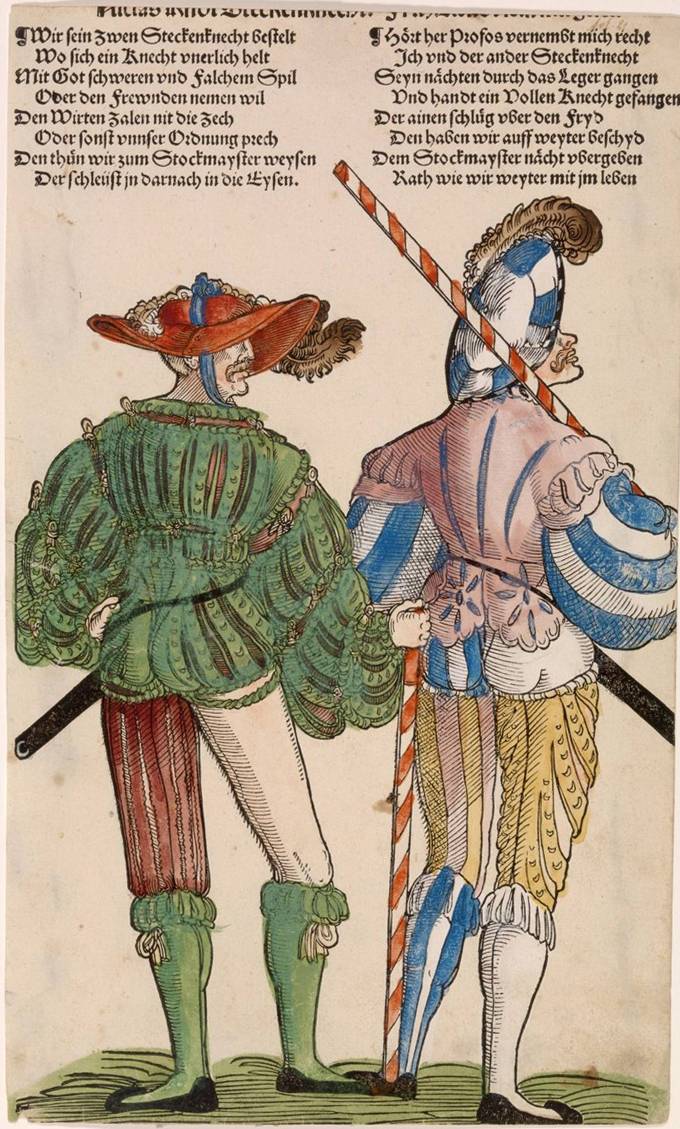
Two overseers, and one also with a bare thigh. And by no means because of the lack of money "for pants." So it was ... fashionable! Artist: Niklas Stoer
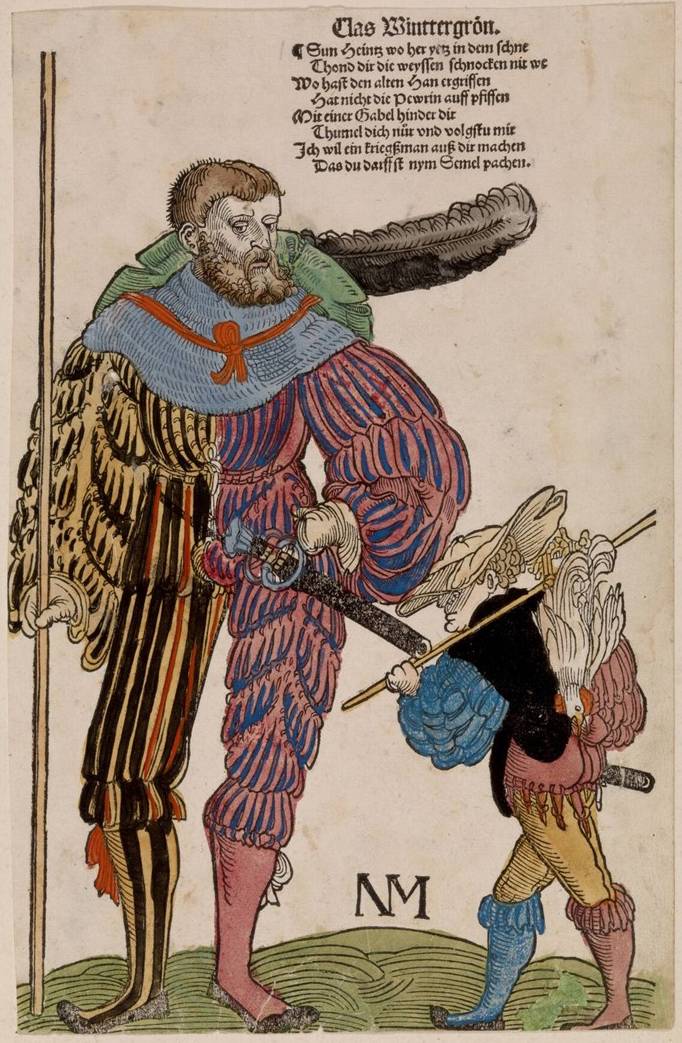
Landsknecht Claes Wintergrün with his son Heinz. Stealing a chicken for papa was in the order of things for the son of a landsknecht! Pay attention to the chain mail cape. Very often it was the only means of protection that they allowed themselves. Artist: Niklas Stoer
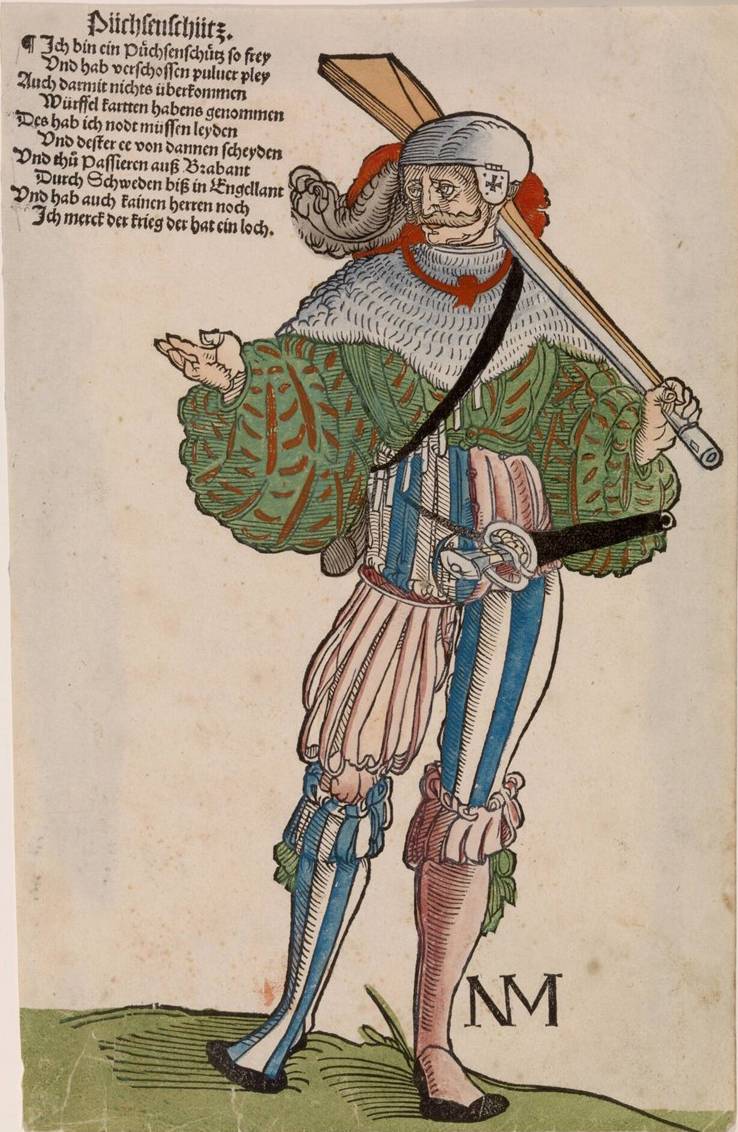
An arquebusier of landsknechts in a small metal cap and chain mail mantle. The cut-out decor on his highways required the work of tailors. And the same should be said about the sleeves with slits, which showed the lining. Illustrator: Erhard Schön
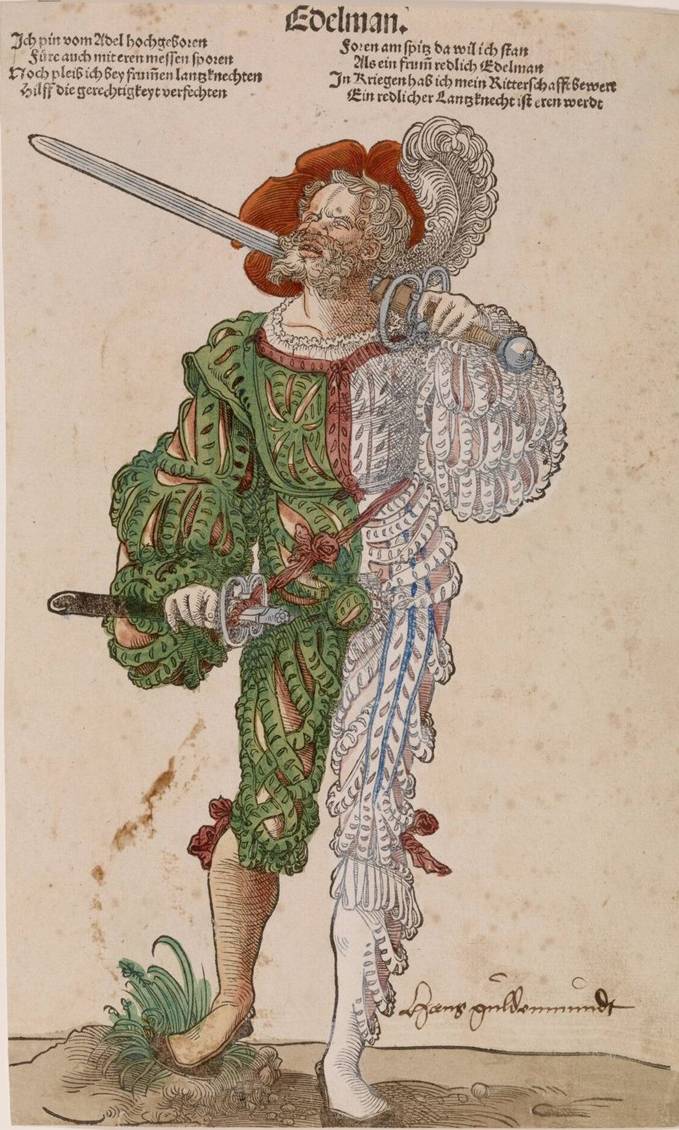
Landsknecht-swordsman in miparti clothes, that is, "two colors". It was about him that it was reported that he was a nobleman, but ... this does not in the least prevent him from serving for money along with commoners. Artist: Niklas Stoer
Information